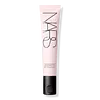What's inside
What's inside
 Key Ingredients
Key Ingredients

 Benefits
Benefits

 Concerns
Concerns

 Ingredients Side-by-side
Ingredients Side-by-side

Butyl Methoxydibenzoylmethane 2%
UV AbsorberHomosalate 6%
Skin ConditioningEthylhexyl Salicylate 5%
UV AbsorberOctocrylene 1.6%
UV AbsorberWater
Skin ConditioningCaprylyl Methicone
Skin ConditioningDipropylene Glycol
HumectantPropanediol
SolventDimethicone
EmollientButyloctyl Salicylate
Skin ConditioningLactobacillus Ferment
Skin ConditioningIsododecane
EmollientAmmonium Acryloyldimethyltaurate/Vp Copolymer
Trisiloxane
Skin ConditioningPolysorbate 60
EmulsifyingTrimethylsiloxysilicate
EmollientDextrin Palmitate
EmulsifyingPhenoxyethanol
PreservativeC14-22 Alcohols
Emulsion StabilisingHydroxyethyl Acrylate/Sodium Acryloyldimethyl Taurate Copolymer
Emulsion StabilisingHydrolyzed Wheat Protein/Pvp Crosspolymer
Panthenol
Skin ConditioningParfum
MaskingEvodia Rutaecarpa Fruit Extract
Skin ConditioningDibutyl Ethylhexanoyl Glutamide
Skin ConditioningDibutyl Lauroyl Glutamide
Skin ConditioningDisodium EDTA
C12-20 Alkyl Glucoside
EmulsifyingDipotassium Glycyrrhizate
HumectantTocopheryl Acetate
AntioxidantSodium Hyaluronate
HumectantButylene Glycol
HumectantPentylene Glycol
Skin ConditioningTin Oxide
AbrasivePotassium Sorbate
PreservativeHydroxyphenyl Propamidobenzoic Acid
Skin ConditioningEthylhexylglycerin
Skin ConditioningAscorbyl Palmitate
AntioxidantMica
Cosmetic ColorantTitanium Dioxide
Cosmetic ColorantCI 14700
Cosmetic ColorantCI 19140
Cosmetic ColorantButyl Methoxydibenzoylmethane 2%, Homosalate 6%, Ethylhexyl Salicylate 5%, Octocrylene 1.6%, Water, Caprylyl Methicone, Dipropylene Glycol, Propanediol, Dimethicone, Butyloctyl Salicylate, Lactobacillus Ferment, Isododecane, Ammonium Acryloyldimethyltaurate/Vp Copolymer, Trisiloxane, Polysorbate 60, Trimethylsiloxysilicate, Dextrin Palmitate, Phenoxyethanol, C14-22 Alcohols, Hydroxyethyl Acrylate/Sodium Acryloyldimethyl Taurate Copolymer, Hydrolyzed Wheat Protein/Pvp Crosspolymer, Panthenol, Parfum, Evodia Rutaecarpa Fruit Extract, Dibutyl Ethylhexanoyl Glutamide, Dibutyl Lauroyl Glutamide, Disodium EDTA, C12-20 Alkyl Glucoside, Dipotassium Glycyrrhizate, Tocopheryl Acetate, Sodium Hyaluronate, Butylene Glycol, Pentylene Glycol, Tin Oxide, Potassium Sorbate, Hydroxyphenyl Propamidobenzoic Acid, Ethylhexylglycerin, Ascorbyl Palmitate, Mica, Titanium Dioxide, CI 14700, CI 19140
 Reviews
Reviews

Ingredients Explained
These ingredients are found in both products.
Ingredients higher up in an ingredient list are typically present in a larger amount.
Isododecane is a fragrance, emollient, and solvent.
As an emollient, it helps your skin stay soft and hydrated. Emollients help trap moisture into your skin.
Isododecane's role as a solvent makes it a great texture enhancer. It spreads smoothly on skin and does not leave a sticky feeling behind. Isododecane also helps prevent color transfer in makeup products.
Isododecane is not absorbed into skin.
Learn more about IsododecaneTitanium dioxide is a mineral UV filter widely used in sunscreens and cosmetics.
It is one of only two UV filters officially classified as “mineral” by regulatory agencies, the other being zinc oxide.
Titanium dioxide provides broad-spectrum protection mostly in the UVB and UVAII range, with some protection in the UVAI range.
While its UVA protection isn’t as strong as zinc oxide’s, the difference is minor.
A common myth is that mineral UV filters reflect UV light. However, modern research shows titanium dioxide absorbs UV radiation like chemical filters (~95% absorption & 5% reflection).
Thanks to its non-irritating nature, titanium dioxide is suitable for sensitive, acne-prone, or redness-prone skin. It is unlikely to cause "eye sting" like other sunscreen ingredients.
A major drawback of this ingredient is its white cast and thick texture. This is why mineral sunscreens often leave a white cast and are less cosmetically elegant than chemical/hybrid sunscreens.
To improve white cast and spreadability, micronized or nano-sized titanium dioxide is often used.
There are ongoing concerns surrounding nano-titanium oxide's impact on marine ecosystems.
There is no conclusive evidence that any form of titanium oxide (or any other sunscreen ingredients) will cause harm to marine ecosystems or coral reefs. The science is still developing but many consumers are keeping a close eye on this issue.
Please note, many destinations have reef-safety sunscreen rules. For instance, the U.S. Virgin Islands advises all visitors to use non-nano mineral sunscreens.
Nano mineral sunscreens once raised safety concerns about absorption into skin.
Extensive research has shown that they do not penetrate healthy or damaged skin; they remain safely on the surface and the top layer of dead skin (stratum corneum).
You'll likely find titanium dioxide bundled with alumina, silica, or dimethicone. These ingredients help make titanium dioxide highly photostable; this prevents it from interacting with other formula components under UV light.
Learn more about Titanium Dioxide